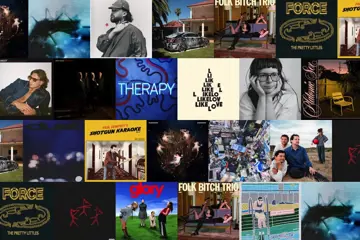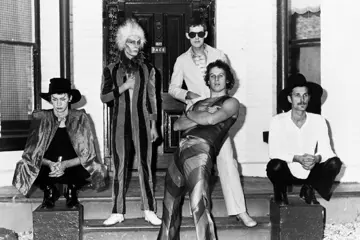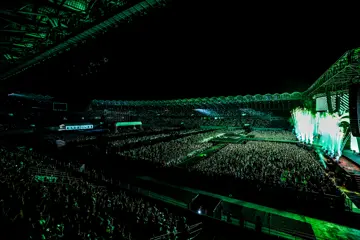The engineering and entertainment industries have long shared an uncanny synergy, with artists consistently amongst the earliest adopters of new technologies. Indeed, art that has explored the most cutting-edge tech has often unlocked experiences of such unexpected intensity, the effect on audiences has become the stuff of legend. One particularly infamous example comes from the dawn of cinema, when an 1896-made, 50-second long film of a train arriving at a Parisian station supposedly sent first-time filmgoers into a stampeding panic, convinced that the approaching locomotive would burst through the silver screen and crash through the auditorium.
That might seem impossibly hysterical by today’s desensitised standards, but contemporary audiences are not totally immune to the same disbelieving wonder, given the right stimuli. And one advance in particular is proving to be chock-full of such potential. Virtual Reality can transport audiences on journeys totally unhindered by the pesky realities of space and time, and even while this technology is still in its relative infancy, it’s already proving to be a game-changer across multiple artistic disciplines.
But it’s a fine line between credible artistic trailblazing and jumping on the bandwagon of a novelty gimmick. Integrating technology into an artwork in a way that not only feels radical, but also effortless, is a rare skill. Rarer still is being able to do so in a way that is so integral to the fabric of the work that it simply couldn't function without; this is art that exists on the razor’s edge where new genres are carved out from the status quo. One such work is Curious Directive’s Frogman, a piece of theatre that conjures a time-travelling, ocean-diving murder mystery whodunit using the deceptively simple forces of a judicious peppering of VR, a single performer (the excellent Georgina Strawson), and a strip of shagpile carpet.
Key to this work’s success is the decision to make the VR equipment itself a conspicuous part of the plot, rather than just a quirky curio. The audience is a jury of sorts, examining evidence pertaining to the disappearance of a teenage girl from a small North Queensland community in the mid-1990s, using VR to review the case. Seated in swivel chairs that allow safely controlled 360-degree movement while accommodating the cables that are still a necessary shortcoming of this technology, the audience is able to access both the traditional theatrical environment and the virtual universe seamlessly. Live action scenes are interspaced by short VR experiences, transporting the audience to the bedroom of 11-year-old Meera, a friend of the vanished girl and a key witness, and most extraordinarily, to the Great Barrier Reef where police divers are searching for traces of the missing child.
The level of detail this gifts the narrative is arresting, but this is more than a mere exercise in wide-eyed spectacle. Director and VR cinematographer Jack Lowe displays such a keen awareness of this technology’s capabilities that its use is as sophisticated emotionally as it is technologically. The story itself is gripping enough, if not a little cliched. But even this somewhat cookie-cutter thriller plot is lifted immeasurably by the savvy and artistry of the work’s innovative mix of media.
The once barnstorming popularity of immersive theatre – of the purely analogue variety – is not quite entirely out of vogue, but it’s certainly been seized upon by enough companies incapable of delivering it with the requisite finesse to show that there is a right and wrong way to explore such creative trends. For any companies out there eyeing VR as the next addition to their toolbox, they would do well to study Frogman. This is unquestionably VR theatre done right.















